Willie Mays, the greatest all-round player in baseball history, who helped to breach racial barriers – obituary
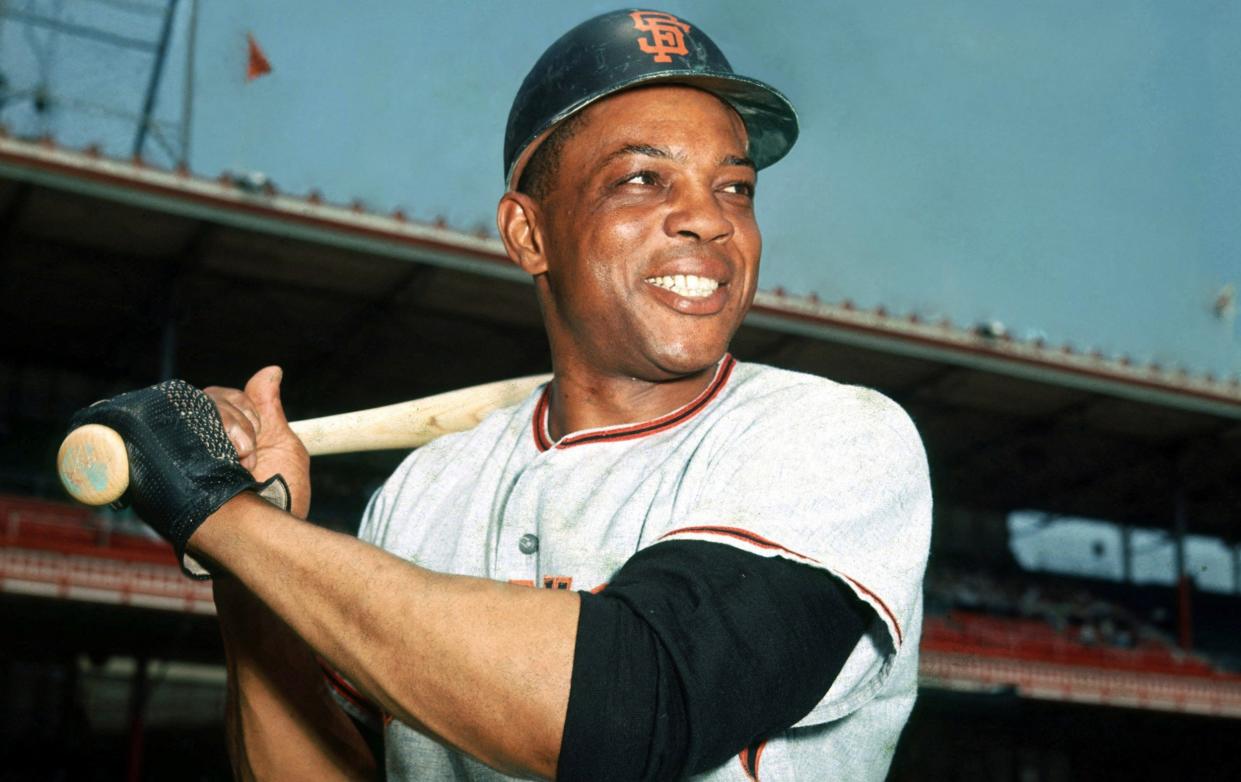
Willie Mays, who has died aged 93, was one of the best baseball players in the history of his sport; alongside his fellow black players, Jackie Robinson and Hank Aaron, he also helped to dismantle racial barriers with his grace, power and effervescent personality.
While most observers would probably place him behind Babe Ruth in the baseball pantheon, there was no better all-rounder. Mays was what coaches call a “five-tool player”, excelling in the five physical categories of speed, throwing, fielding, hitting for power and hitting for average (the batting average is the number of hits divided by the number of at-bats).
He was named on 24 All-Star teams in 18 seasons (more than one such team was sometimes named each year), and across his 23-year career he hit 660 home runs, had 3,293 hits and a batting average of .301.
But while none of those figures are chart-toppers – he comes in at sixth on the all-time home runs list, though he did score four in one game in 1961 – it was Mays’s all-round talents that marked him out. Aside from his hitting prowess and consistency, he had a facility for stealing bases that helped to revive what had been a dying art (a base is stolen when a player manages to progress from one base to the next under the pitcher’s nose). Most importantly, he was a centre-fielder with a magic glove and an exquisitely accurate throwing hand, and from 1957 he won 12 consecutive Gold Gloves for defensive excellence.
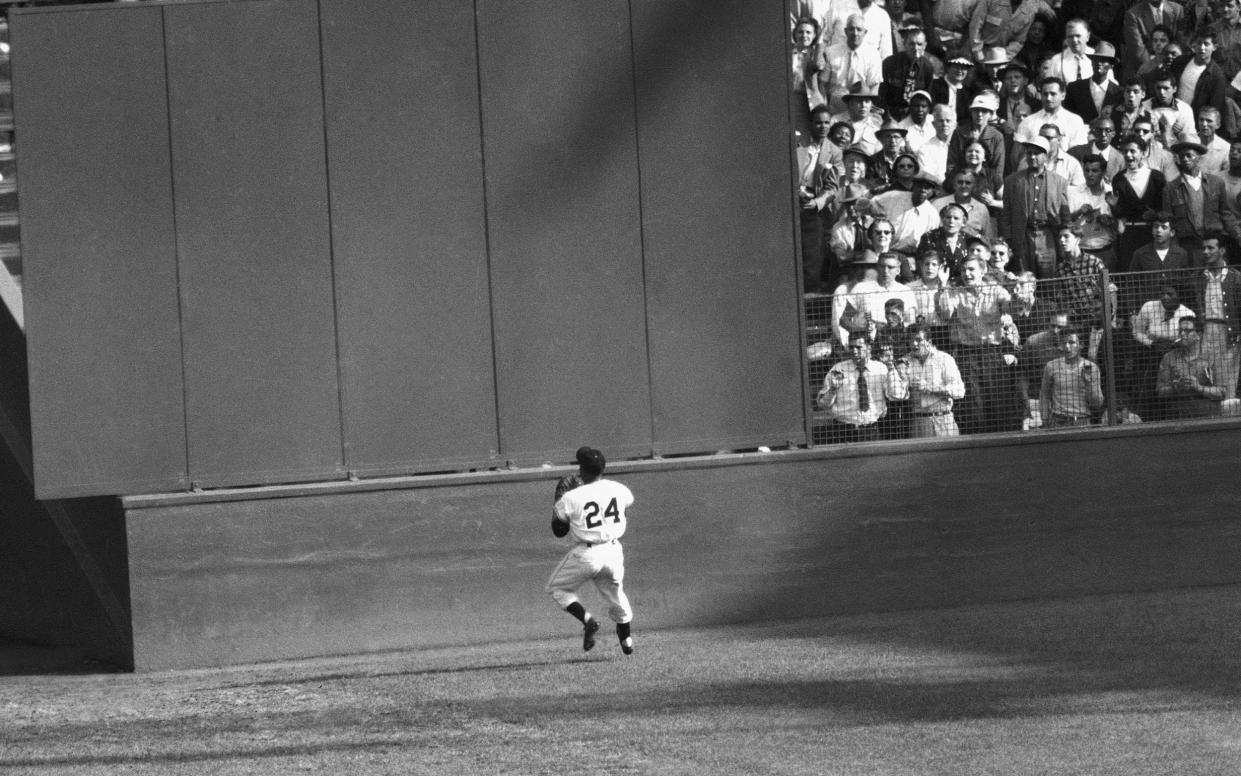
In 1954 he pulled off what became known simply as “the Catch”. In Game 1 of the best-of-seven World Series his New York Giants side were tied 2-2 against the Cleveland Indians in the eighth inning. With the Indians batting, Vic Wertz let fly a mighty shot that seemed to be a home run all the way. But Mays made an astonishing on-the-run, over-the-shoulder catch, then whipped the ball with laser-like accuracy to second base, preventing the Indians from scoring.
The Giants went on to win that match, and the next three, for a 4-0 clean sweep – though Mays was annoyed when sportswriters described his throw as merely “instinctive”.
“All the while I’m runnin’ back, I’m planning how to get off that throw,” he recalled. “To keep my momentum, to get it working for me, I have to turn very hard and short and throw the ball from exactly the point that I caught it.”
The glove with which Mays made his famous catch and throw was eventually put on display at the National Baseball Hall of Fame and Museum.
His sunny character made him immensely popular in the sport and beyond, and he was known as the “Say Hey Kid”, for his habitual greeting of “Hey”. His exuberant personality was matched by an undeniable flashiness on the field of play: he would often make unconventional catches, holding his glove at waist level for his trademark “basket catch”, and he would slide to the ground as he made the catch to make it look trickier than it was. He admitted to wearing a cap a size too big so it would fly off as he ran for a catch or sprinted round the bases.
He said his showy style stemmed from his days in the Negro leagues: “We were all entertainers, and my job was to give the fans something to talk about each game.”
Willie Howard Mays Jr was born on May 3 1931 in Westfield, Alabama, near Birmingham, to unmarried teenage parents; his father, William “Cat” Mays, was a young steelworker and stylish semi-pro baseball player, while his mother, Annie Satterthwaite, was a 16-year-old star runner at high school. When he was a baby she moved away and went on to have 10 more children, though Willie kept in touch with her into adulthood.
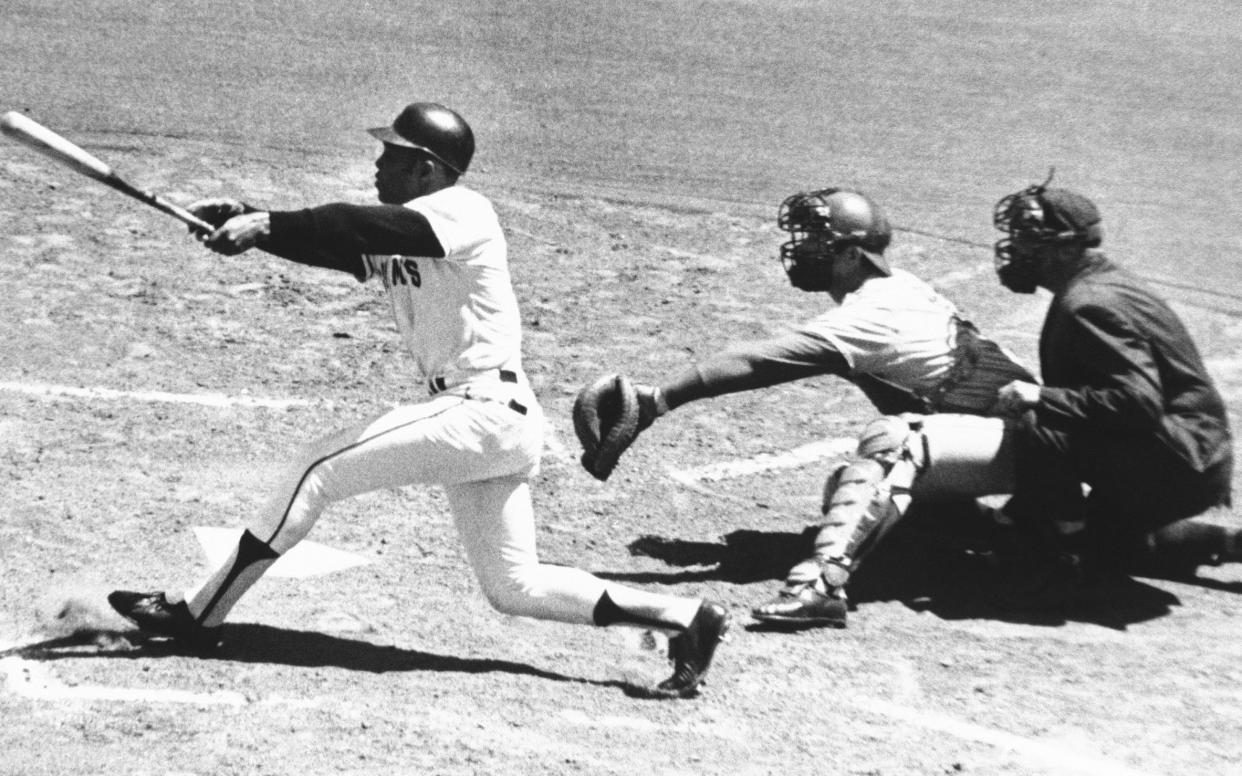
Brought up by his father and two aunts, he was, like his mother, a star athlete, at Fairfield Industrial High School. He was also a baseball prodigy, nurtured by his father, and at 17 joined Birmingham Barons in one of the Negro leagues; he was initially unable to join the team on road trips until school was out for the summer.
In 1947 the major leagues began to take on black players, and three years later the New York Giants paid the Barons $10,000 for Mays, who had just turned 20. He was voted National League Rookie of the Year that season, but with war raging in Korea he was drafted – though he spent the best part of two years in the army playing baseball at an army camp in Virginia.
He returned in 1954 – and after five titles in a row for their city rivals, the New York Yankees, the Giants reached the World Series against Cleveland Indians, with Mays making his famous “Catch”.
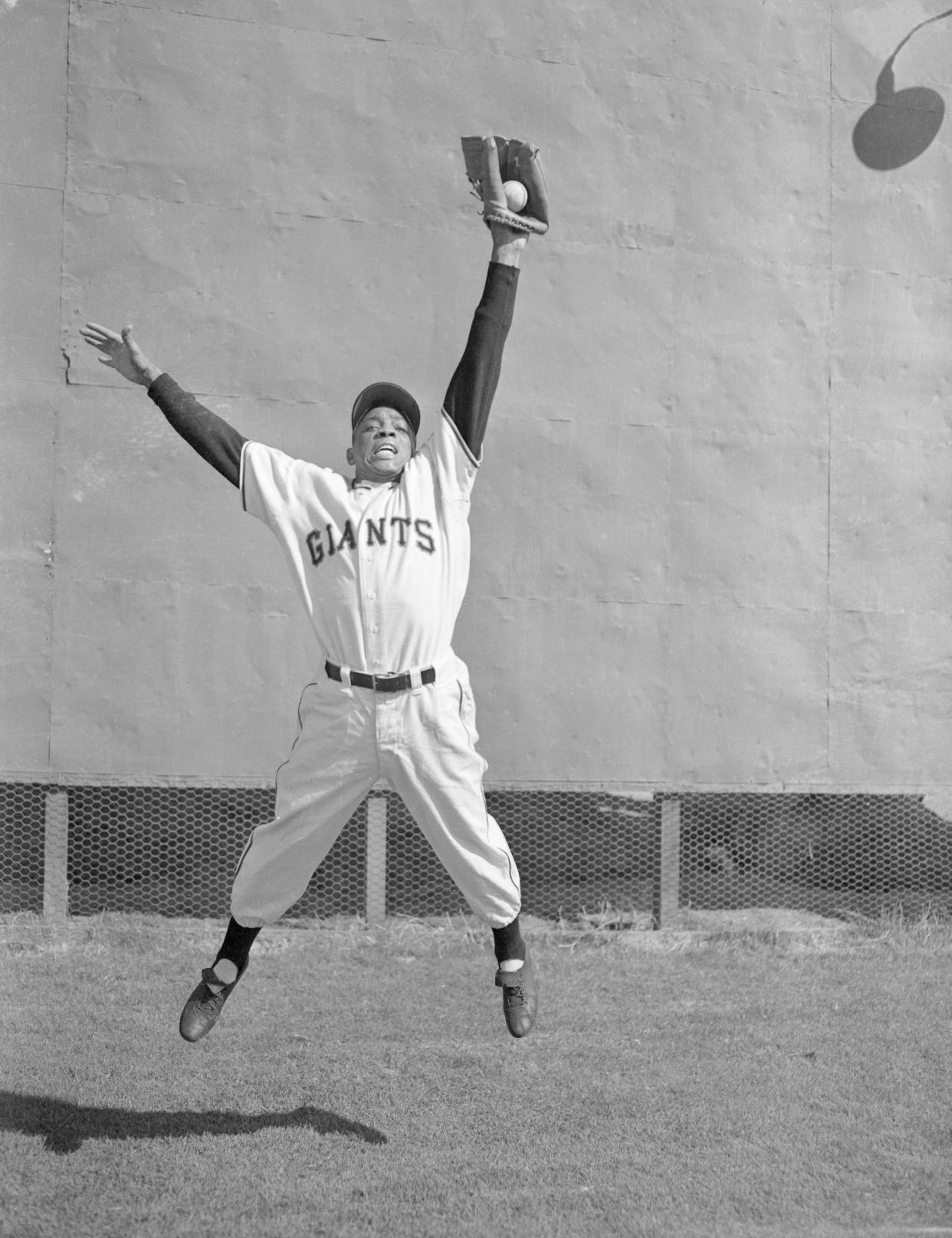
In 1957 the Giants moved to San Francisco – and although Mays would soon become revered in the Golden Gate City, his initial reception was hostile. When he tried to buy a house in a white area there was uproar among neighbours who feared a drop in property values. The city’s mayor offered to put up Mays and his wife in his own home, shaming the house vendors into going ahead with the sale. When the Mays did move in, a Coke bottle containing a hate message was hurled through their front window.
But he was reluctant to make waves, and his hero Jackie Robinson, who did campaign for civil rights, scorned his cosy public image and criticised him for not lending his heft to the struggles for social justice. “I can’t stand on a soapbox and preach,” Mays responded. “It isn’t my nature.” He did his bit, he insisted, by mentoring young black players.
If Mays made one mis-step in his career, it was going on too long. By the early 1970s he was one of his sport’s best-paid players, earning $165,000 a year, but his talents were in decline, and he was traded to the New York Mets, who reached that year’s World Series – but a Mays error in Game 2 proved crucial in handing the momentum to the eventual champions, the Oakland As. He retired immediately afterwards.
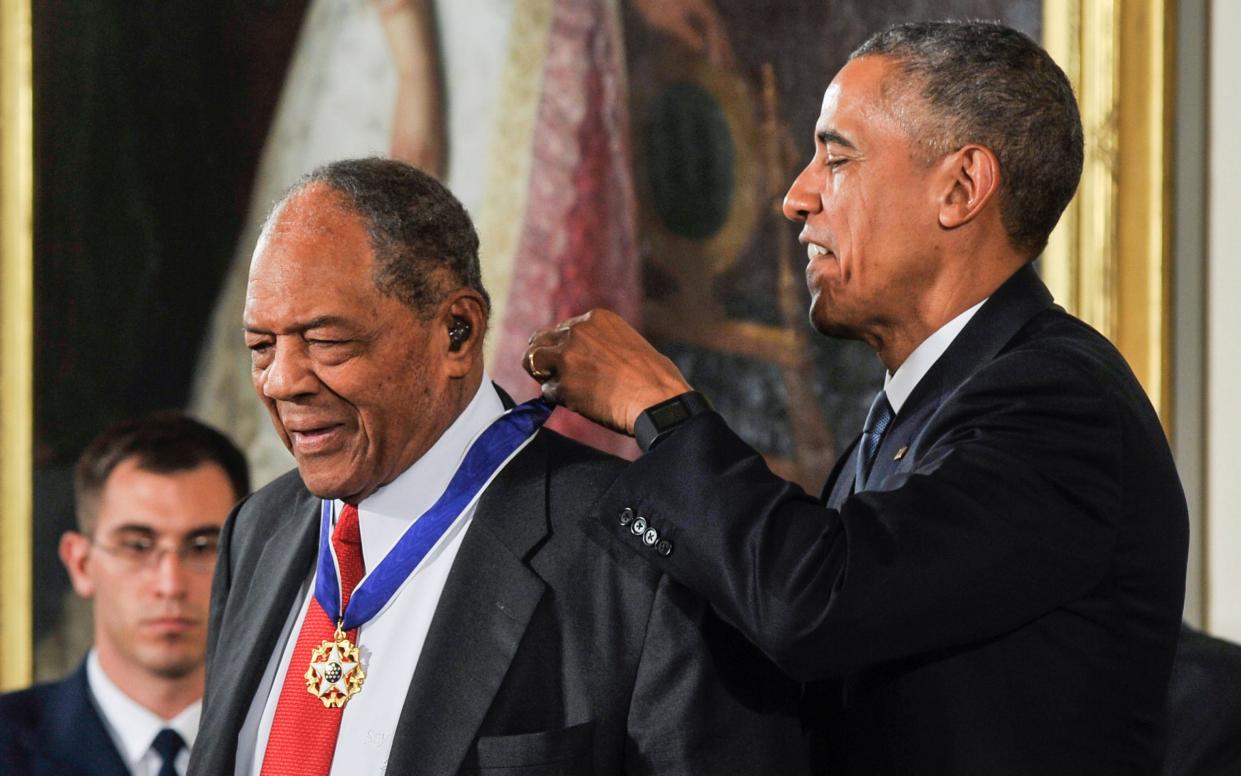
In the 1980s he was banned from baseball for a few years because, along with another legend of the game, Mickey Mantle, he was being paid by casinos to entertain their customers. When the ban was lifted, the Giants gave him a lifetime contract as an adviser.
In 2009 the US president Barack Obama took Mays with him on Air Force One when he flew to the All-Star Game in St Louis. He told Mays that if it had not been for figures like him and Jackie Robinson, “I’m not sure that I would get elected to the White House.” In 2015 Obama presented him with the Presidential Medal of Freedom.
Willie Mays married Marghuerite Wendell Chapman in 1956; they adopted a son, who survives him, but divorced in 1963; he married, secondly, Mae Louise Allen, a child welfare worker. She died in 2013.
Willie Mays, born May 6 1931, died June 18 2024


